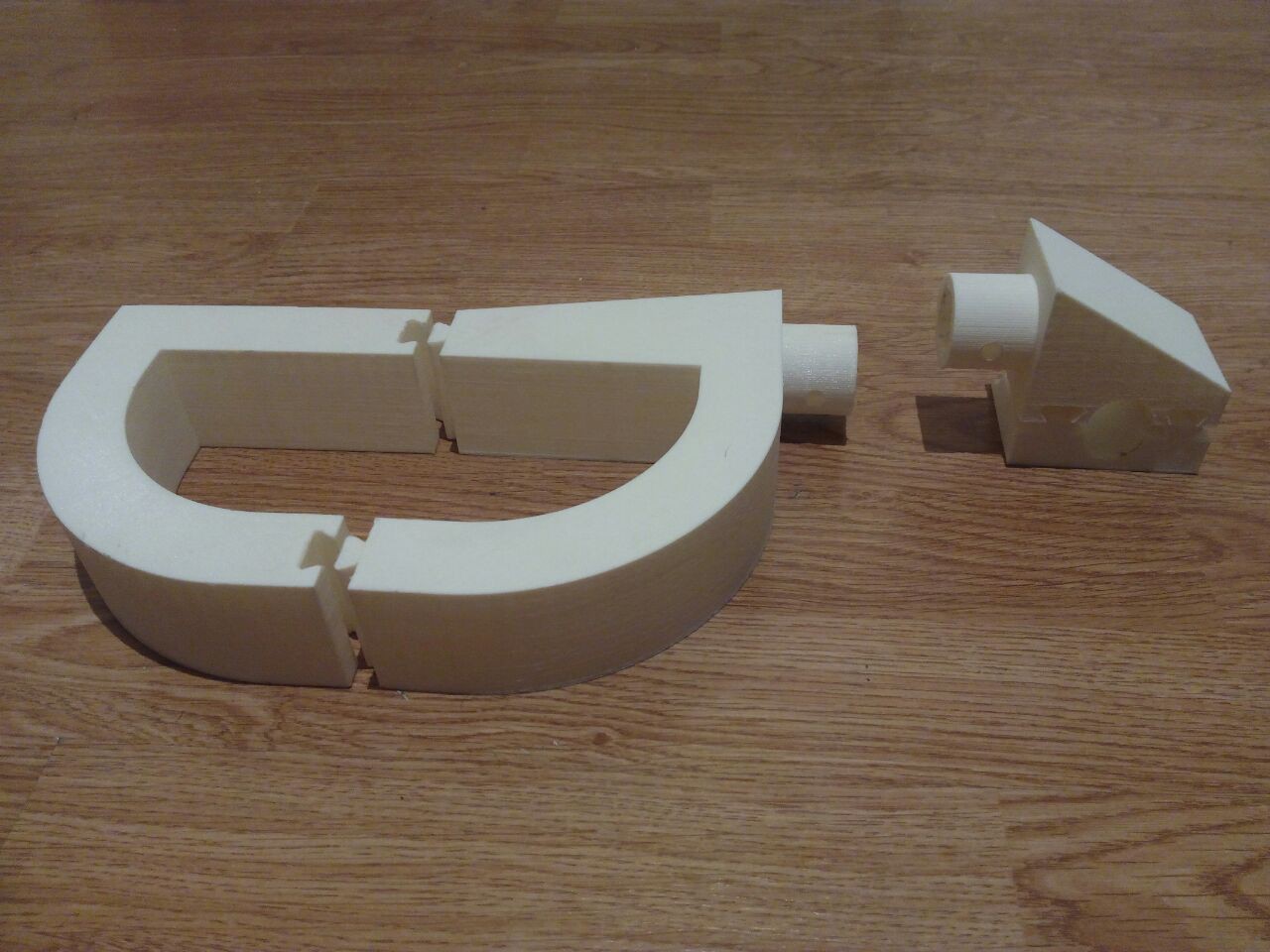The first version we tried was the one seen in the render below, simply attaching a couple of brackets to the hoverboard and two more to the chair and connecting them with a tube with two bolts as fasteners to keep everything in place.

We really liked this idea because it was simple (KISS): the user would only need to unscrew the lid, connect the wires to the corresponding buses and bring them out of the case by removing one of the front lights, all while keeping the original structure and with minimal work.
In the picture below we can see the brackets of both the hoverboard (left) and wheelchair (right). Notice all the pieces are designed with rails for ease of (dis)assembly while retaining strength by orientation.

Under this design, the chair would still theoretically be able to turn on its spot, since the distance between the board's wheels was larger than than the one between a chair-wheel and a board-wheel. However, once we started designing everything we realized a problem: while the board's width is larger, the tubes needed to be connected to the chair to its inner side, which in turn means that now the distance between the tubes was quite smaller than the one between the board and the chair, and there was no way it would turn on its axis, which is essential for indoors maneuvering.
Other problems are that the now larger chair may not fit in dedicated wheelchair spaces reserved for regular chairs or that having a 10kg device at a distance of half a meter would put a substantial amount of stress on the printed joints, and moving on a bumpy street would only worsen that.
With all of these problems we decided that this design would not be viable and went back to the drawing board.
 Alvaro Ferrán Cifuentes
Alvaro Ferrán Cifuentes
Discussions
Become a Hackaday.io Member
Create an account to leave a comment. Already have an account? Log In.